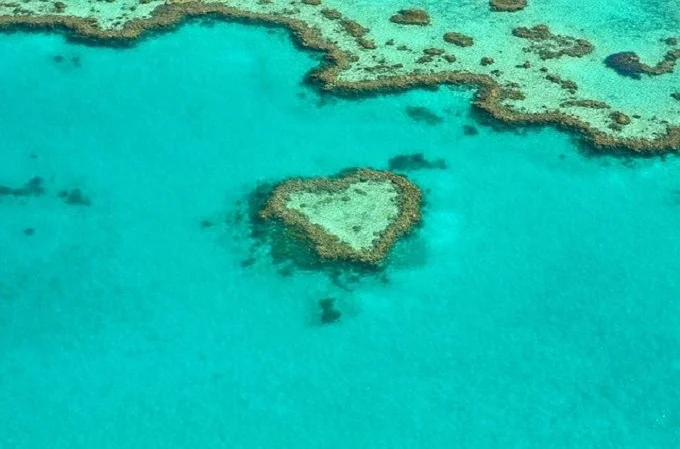The Great Barrier Reef is the hero of a huge number of scientific and educational television programs dedicated to the underwater world of our planet. There are plenty of reasons for the increased attention.
It is not for nothing that this unique ecosystem, consisting of coral reefs and small islands, is included in the list of the seven wonders of the underwater world of the Coral Sea.
Facts about Great Barrier Reef
1. The Great Barrier Reef, located near Australia, is the largest coral reef in the world. It consists of over 2,900 individual reefs and 900 islands and reaches a length of 2,500 kilometers. At the same time, its total area reaches approximately 344.400 km², which is more than the area of countries such as Norway, Malaysia, or Finland.
2. The barrier reef is the largest natural object on our planet, formed by living organisms. Coral polyps, tiny coelenterates, began to form millions of years ago, and the process continues to this day. Now it has reached such a size that it can be seen from space with the naked eye. Astronauts aboard the ISS can see it from near-earth orbit.
3. Biologically, the Great Barrier Reef is the largest single ecosystem in the world. There are about 400 different species of coral in it, and the age of individual atolls is estimated at millions of years. At the same time, the age of the main part of the reef does not exceed 400,000 years, and the most intensive period of growth began about 8,000 years ago, due to the rise in the level of the World Ocean.
4. There are about 1500 species in the waters surrounding the Barrier Reef, and 500 of them are ideally adapted by nature to survive in this particular ecosystem. The whale shark, the largest fish on earth, is also found here.
5. One of the challenges for the reef is the crown of thorns starfish. These poisonous mollusks, which grow up to 0.5 meters in diameter, feed on coral polyps, and their population is most of all on the Great Barrier Reef. They feed on it, causing enormous damage to it, and at the same time, multiplying faster and faster.
6. Six of the seven species of sea turtles found on earth are found in the Barrier Reef area. And yet there is an incredibly significant variety of various crustaceans, even not small separate reefs of them, more than a hundred species can exist. Shrimp, crabs, lobster – it’s full of them all. In this case, the ground vegetation here is a little – on the part of the reef, islands grow only 40 species.
7. The indigenous people of Australia began to use the resources of this magical place about 40,000 years ago, foraging here for themselves, mainly various shellfish. And here, one of the ships of the famous James Cook ran aground. The reef was later mapped, and the route became safer for ships.
8. Since 1981, the Great Barrier Reef has been included in the UNESCO World Heritage List, and its entire territory has been declared a marine park. Here banned hunting, extraction of minerals, and any other potentially destructive activities. Part of the reef is open to tourists, but there are many rules here – do not touch underwater corals, for example.
9. In 2013, during a joint military exercise conducted by the aviation of Australia and the United States, American aircraft mistakenly dropped four training bombs on the territory of the Barrier Reef. Fortunately, they were just training, that is, not “charged,” so there was no damage.
10. Global climate change poses a huge risk to the very existence of the reef. The zone of thermal comfort of the coral polyps forming it is very narrow, and if the water temperature rises here by only 1 ° C, they will begin to die, leading to the reef’s death.
